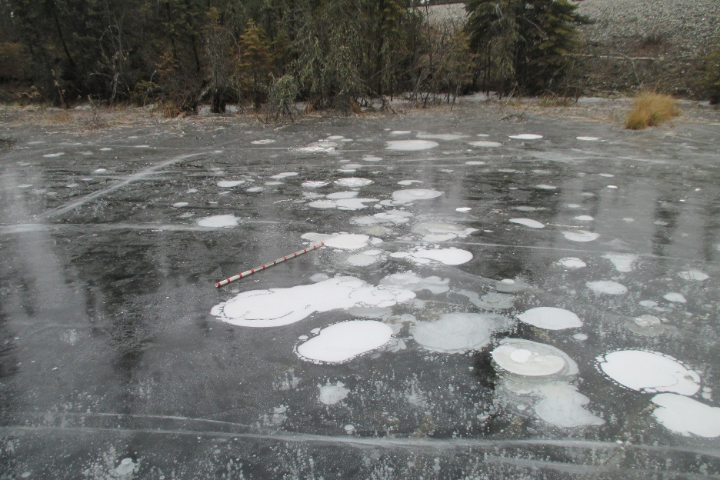NASA - SAR Radar Offers A Way To Get Far Better Data On Methane Release From Remote Arctic Lakes
According to one estimate, there are more than 3.6 million lakes in the Arctic. They are remote and hard to reach and sample in the field, especially when they are covered with ice during the Arctic’s long winters. Yet they are critically important to understanding climate change. As tiny organisms in Arctic lake sediments called archaea break down organic matter, they release methane, a potent greenhouse gas. Methane (CH4) has a heat-trapping power about 30 times stronger than carbon dioxide. Finding the sources of methane around the world and measuring how much they are emitting has become an important scientific pursuit. Most attempts to measure methane emissions from lakes have focused on summer conditions when lakes are ice free, but the processes that produce the gas continue through the winter when many lakes are frozen.
“But the sheer number of Arctic lakes makes getting to them all impossible in any season,” explained Melanie Engram, a University of Alaska scientist. To get around this problem, Engram and colleagues have developed a new satellite-based technique to measure methane from lakes. The new technique makes use of L-Band synthetic aperture radar (SAR), a technology that involves bouncing microwaves off Earth’s surfaces and looking for changes in the reflection patterns observed by the satellite. The technique works even in cloudy conditions, if a layer of snow covers lake ice, or in darkness.

“When methane rises from the lake bottom, the columns of bubbles serve as insulators, slowing ice growth near the bubble column,” explained Engram. “Ice grows more quickly around the column, and you end up with these big divots beneath bubble columns that fill with water. Since water is especially reflective to microwave pulses, we are able to make measurements of how the waves bounce back after hitting the water divots to infer how much methane has bubbled up.” The photograph above shows an example of how methane bubbles in a frozen lake in Fairbanks, Alaska, can alter ice.
Using the SAR-based technique, Engram and colleagues calculated the methane flux—the rate of methane exchanged between the lake and the atmosphere—of 5,143 of the estimated 134,000 lakes in Alaska. To validate their satellite observations, they also made ground-based measurements at dozens of lakes near Barrow Peninsula, Atqasuk, Toolik, Northern Seward Peninsula, and Fairbanks, where they placed submerged “bubble traps” to measure methane emissions. The study was part of NASA’s Arctic-Boreal Vulnerability Experiment (ABoVE).
EDIT
https://earthobservatory.nasa.gov/images/146940/satellites-size-up-bubbles-of-methane-in-lake-ice?utm_source=card_5&utm_medium=direct&utm_campaign=home
